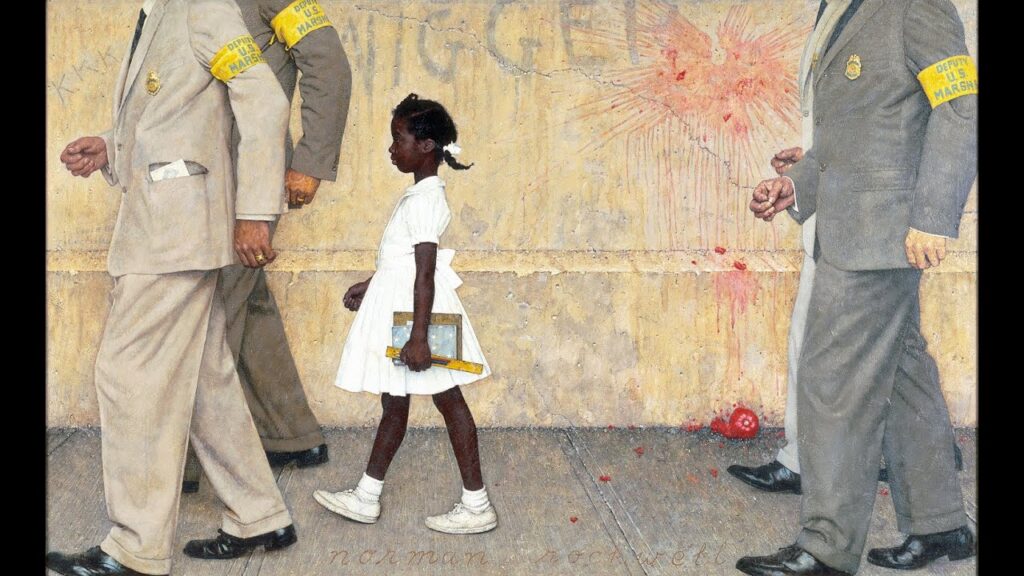Tuesday, February 23rd
The 5 biggest differences in the two extracts
1- In the first extract, Ruby was stressed out whereas in the 2nd extract, she was determined and she didn’t care.
2- In the 2nd extract, there were 2 graffiti: it was written « nigger » and KKK (nigger = an insult / KKK: Ku Klux Klan = a racist organization)
3- In the first extract, Ruby had a pink dress and ribbon whereas in the 2nd extract, she had a white only outfit.
4- In the first extract, there was no fence to protect her. In the 2nd extract, she didn’t have her mother but she was escorted by 4 US marshals.
5- The 2nd extract was more violent: someone spat* at her and threw* a tomato at her.
